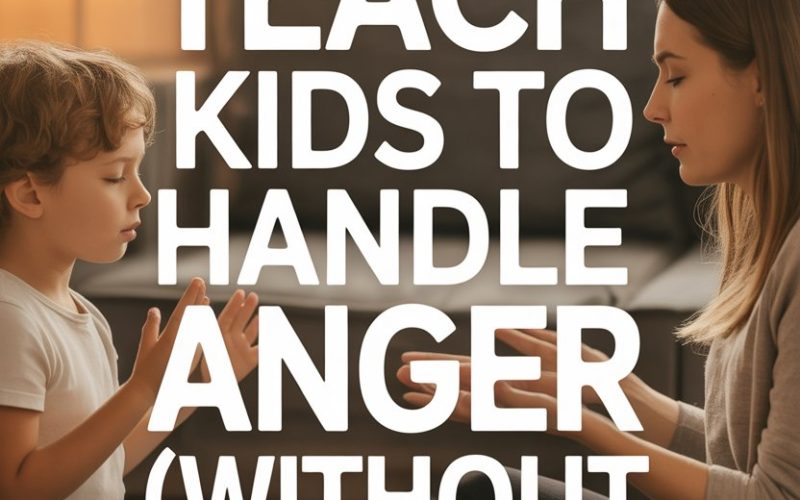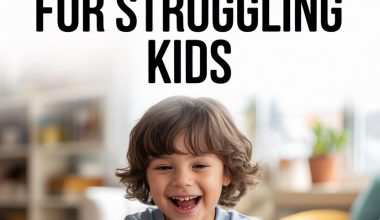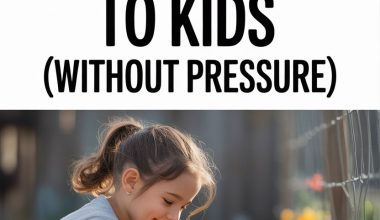Ah, anger. The universal language of toddlers, tweens, and (let’s be honest) parents surviving yet another spilt cup or sibling scuffle.
If you’ve ever found yourself arguing with a five-year-old about who actually touched whom first, you know all too well: managing anger—our own and our children’s—is a family affair.
Thankfully, teaching kids to handle their anger without everyone resorting to shouting matches is entirely possible. Even in the most chaotic households.
Here’s how to keep the peace (and your sanity) when tempers flare.
Normalising Anger (Yes, Really)
Anger isn’t the enemy. It’s what we do with it that counts.
Children need to know that feeling angry is as normal as feeling hungry or tired.
The difference is, hangriness can be solved with a snack. Anger takes a bit more finesse.
Kids who hear adults say things like, “You shouldn’t be angry,” or “Calm down right now!” may start to believe that anger itself is bad.
This isn’t just unhelpful—it’s untrue. Anger is information. It’s a signal that something feels unfair, scary, or out of control.
Try saying: “It’s okay to feel angry. Let’s figure out what we can do with that feeling.” Giving anger a seat at the table makes it less likely to flip the table over.
Giving Anger a Name and a Place
Little ones (and plenty of bigger ones) often lack the vocabulary to explain what’s happening inside them. Instead, you get grunts, foot-stomping, or an impressive attempt to launch a toy car into low-earth orbit.
Help by giving feelings names. “It looks like you’re feeling angry because your turn ended.” Or, for older kids: “Seems like you’re frustrated about your maths test score.”
Younger children benefit from visuals. Grab some paper and draw faces with different expressions, or use a feelings chart stuck to the fridge.
Acknowledge the feeling and point out where it “lives” in their body. “Is your tummy tight? Are your fists clenched?”
Kids often find it oddly comforting to know that anger has a physical address.
Modelling Calm (Even When You’d Rather Scream into a Pillow)
Let’s not pretend adults are always paragons of self-control. Still, your child is watching—especially when you hit your limit.
Modelling doesn’t mean never losing your temper; it means showing what you do next.
If you snap, pause and say, “I was really frustrated when the cat knocked over my mug. I need a minute to breathe.”
Demonstrating your own coping skills—walking away, deep breathing, even muttering “I need a second!”—shows kids that anger doesn’t have to end in fireworks.
Plus, it’s a handy excuse to take a covert chocolate break.
Teaching Simple Calming Techniques
Kids aren’t born knowing how to manage big feelings. Techniques like deep breathing, counting to ten, or squeezing a pillow can work wonders, but only if children know how to use them before anger takes over.
Get playful with practice.
Pretend to “blow up a balloon” by taking deep, slow breaths together. Race to see who can tense and relax their muscles the fastest. Try “rainbow breathing” (inhale, then exhale while tracing an arc in the air).
Apps like Smiling Mind and Headspace for Kids offer guided exercises with fun animations. Yes, screen time that actually helps.
The trick is routine: Practice these techniques when your child is calm, then remind them when anger is rising. Like learning to ride a bike, it’ll be wobbly at first.
Setting Clear (and Reasonable) Boundaries
Anger is okay. Hurting people, pets, or property is not.
Repeat it like a mantra. Kids need to understand that while all feelings are allowed, not all behaviours are.
Spell out what is and isn’t acceptable: “You can stomp your feet, but you can’t hit your sister.” (Sibling squabbles: the Olympics of patience.)
Consistency is key. If you say, “Throwing toys means they go into time-out,” follow through gently every time.
Harsh punishments or shaming only teach children to hide anger, not handle it.
Instead, explain consequences ahead of time and keep your voice as even as possible. (Yes, even when the Lego brick finds your bare foot.)
Creating a Calm-Down Space
Every family needs a spot for cooling off—a “calm-down corner,” “chill-out chair,” or, in my house, the “sofa of reflection.”
Whatever you call it, it’s not a punishment zone. It’s a place to feel safe and regroup.
Fill it with comforting items: a squishy cushion, soft toy, favourite book, or even a stress ball. Let your child help decorate.
The point is to give them somewhere to go when their feelings get too big for the kitchen table.
Invite them—not order them—to use their space: “Would you like some time in your calm-down chair, or would you rather sit with me?”
Some kids will bolt for their corner. Others need you to sit quietly nearby. Both are fine.
Problem-Solving Together
Anger is often the tip of the iceberg. Underneath, you’ll find disappointment, fear, embarrassment, or tiredness. Once the storm has passed, sit with your child and talk through what happened.
Not during the meltdown—wait until everyone’s heart rate is back under 120 beats per minute.
Ask questions that encourage reflection: “What made you upset? What could we try next time?”
Younger children may need you to offer solutions. “Would it help to ask for a turn instead of grabbing?” Older children can brainstorm with you.
The goal isn’t to avoid anger, but to learn from it.
Sometimes the “solution” is simply a snack. Never underestimate the power of a jam sandwich.
Using Stories and Examples
Children learn best through stories—ideally ones where the main character doesn’t have everything sorted by page two.
Pick picture books or chapter books that feature characters getting angry and working through it, like When Sophie Gets Angry—Really, Really Angry… or Anh’s Anger.
Share your own stories, too. Kids love hearing about the time Mum got cross because the car wouldn’t start, or how Dad fixed his temper with a silly dance in the kitchen. (Bonus points if you actually demonstrate said dance. Extra bonus points for video evidence.)
When to Seek Extra Help
Sometimes, anger gets too big for family solutions.
If your child’s temper causes harm, lasts for long stretches, or seems out of proportion to everyday events, it might be time to chat with a professional.
Behaviour that’s aggressive, destructive, or paired with anxiety can benefit from a chat with your GP, a school counselor, or a child psychologist. You’re not failing—you’re getting more tools for the toolbox.
The NHS and Child Mind Institute both offer guidance and can point you in the right direction.
Keeping Calm Is a Team Sport
Teaching kids to manage anger without raising your voice isn’t about perfection. It’s about practice (and a hefty side-serving of patience).
Every family, every child, and—let’s face it—every parent will have those days when tempers flare and voices rise.
What matters is showing children that anger doesn’t need to rule the roost.
With some empathy, a few practical tricks, and the occasional biscuit bribe, everyone can learn to handle anger without shouting above the din.
And if all else fails? There’s always that pillow to scream into—just make sure it’s not the decorative one.





